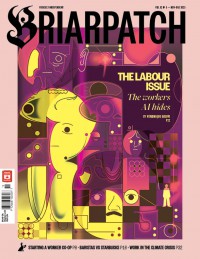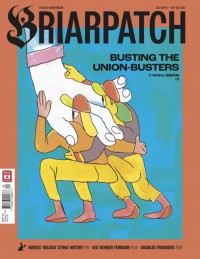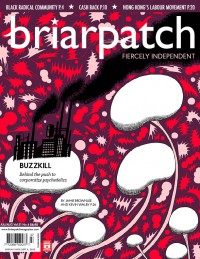-
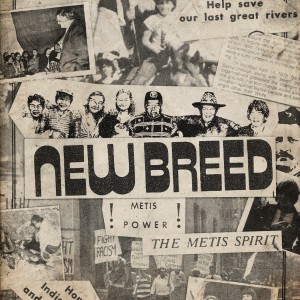 Magazine
MagazineMétis militancy and Saskatchewan media
In the ’70s and ’80s, Saskatchewan’s left was chronicled by two formidable magazines: New Breed and Briarpatch. This is the story of how they made grassroots media in Saskatchewan.
-
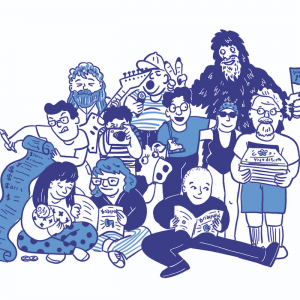 Magazine
MagazineThe people’s magazine
The funny, strange, and dogged ways that Briarpatch’s readers have helped this magazine reach its 50th anniversary
-
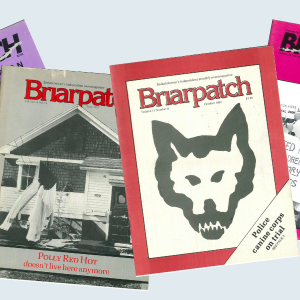 Magazine
Magazine50 years of editing Briarpatch
Four editors reflect on decades of editing Briarpatch: what they learned, the stories that challenged them, what’s changed, and what’s stayed the same.
-
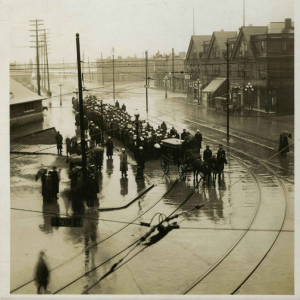 Online-only
Online-onlyThe memorialization of Mewa Singh
Almost 100 years ago, Mewa Singh walked into Vancouver’s courthouse and shot William Hopkinson, an immigration inspector tasked with undermining anti-colonial organizing. What does it mean to commemorate Singh as an “anti-racist activist”?
-
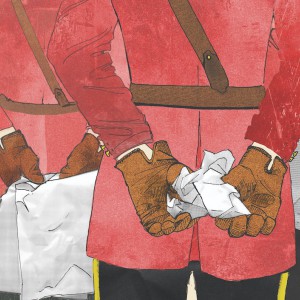 Magazine
MagazineAdministrative sabotage
The archives of Canada’s security state are being strangled by secrecy, censorship, and years of delays.
-
 Magazine
MagazineFinding kin and connection through “Halfbreed”
This year, I read Maria Campbell’s foundational memoir in a book club of Métis women. Nearly 50 years since it was published, “Halfbreed” still holds important teachings for those of us on the journey of understanding what it means to be Métis.
-
 Magazine
MagazineHistory of a Prison
As Lorna Poplak’s new book “The Don: The Story of Toronto’s Infamous Jail” shows, it’s impossible for a history of a prison to disappear the continuity between one institution and the carceral whole.
-

-
 Magazine
MagazineOf lovers and land
How can immigrant settlers – weighted by our own racial memory of land and its loss – cultivate ethical relationships with the land here?
-
 Magazine
MagazineBending the arc of movement history toward a just transition
This is some of the history of the just transition movement, traced across Turtle Island through three decades of struggle.
-
 Magazine
Magazine“We can only glimpse our future reflected in our past”
Generations from today, a group of young activists sends a letter to a historian of the 21st century, hoping that she will be able to settle an argument about tactics. Her letter gives us a glimpse of what life is like in the 22nd century – after a just transition.
-
 Online-only
Online-onlyAre any of Rosa Luxemburg’s ideas relevant for us today?
One hundred years after the murder of the Polish-German revolutionary socialist, are any of her ideas still useful for leftists?
-
 Magazine
MagazineIf only they knew what we know now
I often wondered how many other young folks of Japanese ancestry had their history torn from them because of Canada’s history of Japanese internment – a pondering that eventually turned into this photography series, The Suitcase Project. Photography winner of of the Writing in the Margins contest.
-
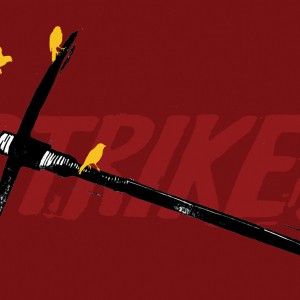 Magazine
MagazineRemembering the 1919 Drumheller strike
“Hell’s Hole,” “the Devil’s Row,” and “the Western Front” – these were the nicknames for the coal mines of the Drumheller valley. In 1919, around 6,500 Drumheller coal miners walked off the job after voting to join the radical and militant One Big Union. Nearly a hundred years later, the 1919 Drumheller strike remains one of the most famous examples of workers’ power on the Prairies.
-
 Magazine
MagazineUprooted
Through the ’60s, ’70s, and ’80s, the Canadian government took thousands of First Nations children from their families and placed them in white foster homes. I was one of them. Alienated from my language, culture, and community, I was taught to hate my people.
-
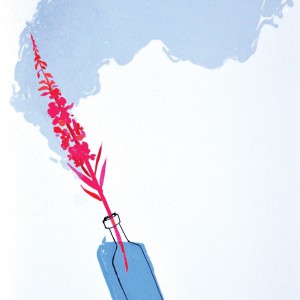 Magazine
MagazineRunning the Fascists Out of Town
A history of anti-racist organizing in Canada lives on in today’s radical antifascist activism
-
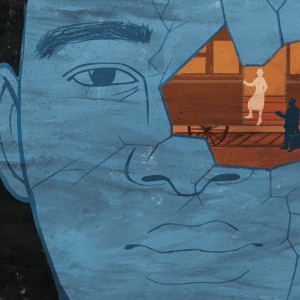 Magazine
MagazinePolicing Black Lives: The Colour Line
The history of segregated labour in Canada’s Jim-Crow era
-
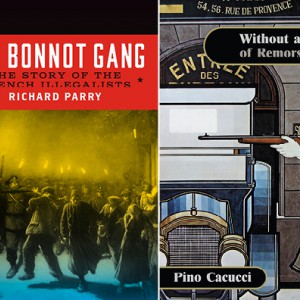 Magazine
MagazineThe Bonnot Gang
Reviews of The Bonnot Gang: The Story of the French Illegalists by Richard Parry and Without a Glimmer of Remorse by Pino Cacucci reveal compelling insights into the history of French illegalists.
-
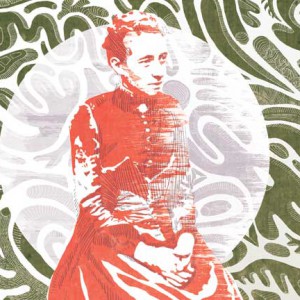 Magazine
MagazineWhite Woman’s Burden
Excerpt from Beyond the Pale: White Women, Racism and History, published by Verso in 1992, 2015.

